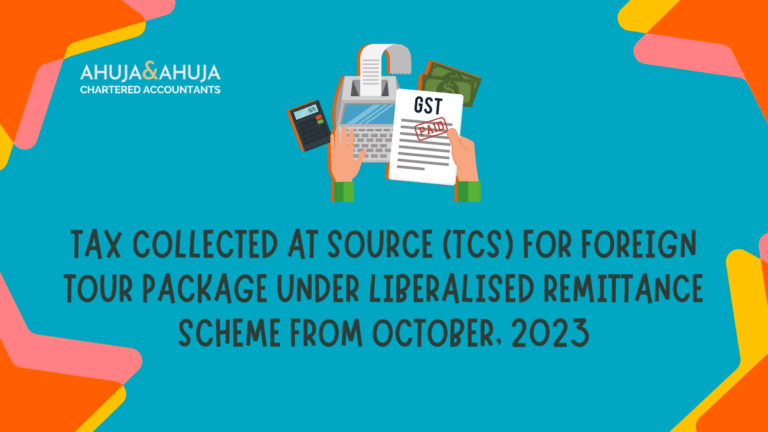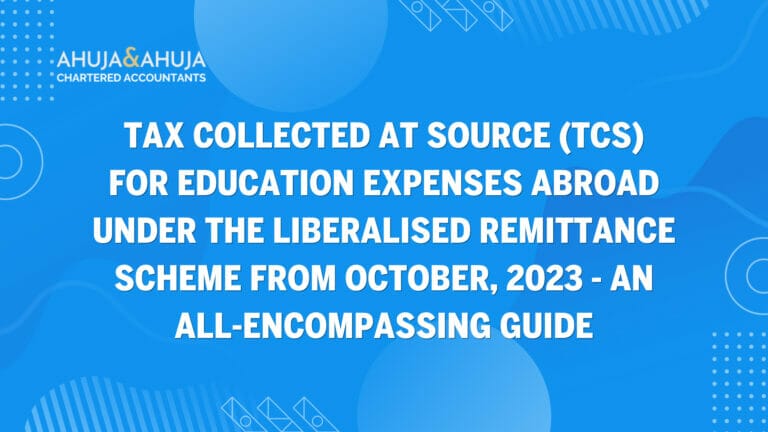Detailed Guide to Minimum Alternative Tax Section 115JB
Understanding MAT
Minimum Alternate Tax, commonly known as MAT, is meticulously designed to ensure that companies with large profits, as per their financial statements, contribute a fair share of taxes to the government.
Traditionally, companies could significantly reduce their taxable liability by availing various deductions and exemptions provided under the Income Tax Act, 1961.
Due to this, even highly profitable companies could end up paying minimal to no tax. MAT was introduced in 1987 as a countermeasure to this practice, ensuring a baseline tax payment by companies, thus aiding in equitable tax collection from all profit-making entities.
Relevance of MAT:
MAT plays an essential role in the fiscal landscape by minimizing tax avoidance, promoting tax equity among corporations, ensuring a consistent revenue stream for the government, and maintaining a check on the creative accounting practices aimed at reducing taxable profits.
Applicability of MAT
MAT targets companies earning substantial book profits but taking advantage of tax exemptions and incentives to lessen their taxable income.
The criteria have evolved, with exceptions including:
- Life Insurance Companies.
- Companies opting under special taxation regimes like section 115BAA or 115BAB.
- Shipping firms that choose tonnage-tax schemes.
- Certain foreign companies, based on the Double Taxation Avoidance Agreement specifics or their operational status as dictated in international taxation guidelines.
It’s pertinent for companies, especially those participating in international operations or planning a buy-back of shares, to comprehend MAT’s scope as it could significantly impact their financial and tax planning strategies.
Specific Exclusion for IFSC Companies
If a company is located in an International Financial Services Centre (IFSC), it benefits from a reduced MAT rate of 9% instead of 15%, reflecting the government’s initiative to encourage operations in these zones.
This special rate supports the financial operations within IFSCs, linking them with enhanced global financial services and compliance practices, such as those involved in transfer pricing and acquisition of Tax Residency Certificates.
Why Is MAT Significant?
MAT’s implementation brings several critical aspects of corporate taxation into spotlight:
- Fairness: MAT ensures all profit-making companies, despite their effective use of tax provisions, contribute a baseline tax amount.
- Simplicity: Simplifies the tax administration’s job by curtailing excessive tax avoidance tactics.
- Revenue security: Assures a steady revenue flow from corporate taxes which is vital for economic stability and development.
This introductory section sets a solid foundation for understanding the concept and significance of Minimum Alternate Tax (MAT).
As we delve deeper into the intricacies of MAT in subsequent sections, we will explore calculation methodologies, specific cases, and advanced concepts integral to comprehensive corporate tax services available here.
How MAT is Calculated: The Mechanics of Section 115JB
Calculating Minimum Alternate Tax (MAT) involves a detailed scrutiny of a company’s financials as portrayed in its book profits.
These are not simply the net profits declared in the profit and loss statement but are adjusted according to specific additions and deductions as outlined in the Income Tax Act.
Steps to Calculate Book Profit for MAT Purpose
The process to determine book profit is structured and meticulous, ensuring every relevant financial variable is considered to achieve fairness and accuracy in tax computation.
Here’s a look at the typical adjustments made to the net profit:
1. Additions to Net Profit:
- Income taxes paid or payable.
- Amounts transferred to reserves.
- Proposed or paid dividends.
- Depreciation, including that on revalued assets.
- Expenditure related to income exempt under Sections 10, except specific sections like 10AA.
2. Deductions from Net Profit:
- Amounts withdrawn from reserves or provisions, which were originally added back.
- Income to which Section 10 (other than sections 10AA) applies.
- Amount withdrawn from revaluation reserves utilized only up to the extent of depreciation on revalued assets.
- Lower of the amount of loss brought forward or unabsorbed depreciation, as per books, not including depreciation itself.
Practical Example of Calculating Book Profit
Let’s consider a hypothetical scenario where a company posts a net profit of INR 10,00,000 in their financial statements. The following adjustments would be made to calculate the book profit:
Additions:
Income tax paid: INR 2,00,000
Dividend proposed: INR 1,00,000
Depreciation: INR 3,00,000
Deductions:
Income under Section 10: INR 50,000
Withdrawal from general reserve (previously added): INR 1,00,000
The resultant book profit after these adjustments would be:
INR 10,00,000 + INR 6,00,000 – INR 1,50,000 = INR 14,50,000
This book profit is then subjected to the applicable MAT rate to compute the tax liability under Section 115JB.
Key Points to Remember
- MAT Rate: Standard rate is 15%, but varies for companies in special zones like IFSC, where it is 9%.
- Cess and Surcharge: These are additional to the MAT rate and must be considered during final tax computation.
This detailed examination into the calculation of book profit and tax under MAT provides not only clarity but also equips companies with the knowledge to anticipate their tax liabilities effectively.
It’s critical for businesses, especially those engaging in complex transactions or operating in special economic zones, to maintain rigorous financial discipline and seek professional guidance when necessary.
Understanding MAT Credit Under Section 115JAA
MAT Credit is a provision that allows companies to minimize their future tax liabilities. It acts as a financial tool that ensures companies, while paying a minimum tax as MAT, do not suffer by paying taxes both on book profits and normal taxable income.
Eligibility for MAT Credit
To be eligible for MAT credit:
- A company must have paid MAT as per Section 115JB.
- The MAT paid should be higher than the normal taxable income in that assessment year.
How to Calculate MAT Credit
MAT Credit = MAT Paid – Tax payable on normal taxable income
This formula helps businesses compute the tax credit that they can carry forward to subsequent years. For instance, if a company pays INR 2,00,000 as MAT and the tax on normal income is INR 1,50,000, the MAT credit available would be INR 50,000.
Utilization of MAT Credit
Carrying forward and utilizing MAT credit is conditional and strategic:
- Carry Forward Duration: MAT credit can be carried forward up to 15 previous Assessment Years, providing companies with a long temporal window to adjust their tax liabilities.
- Utilization Limits: MAT credit can be utilized only against the tax payable under the normal provisions of the Income Tax Act, ensuring that it is used only in years when normal tax liability exceeds the MAT liability.
Using MAT Credit: A Hypothetical Case Study
Consider a company with a MAT credit of INR 50,000 from a previous year. If, in the subsequent year, the tax liability as per normal provisions amounts to INR 1,20,000 and the MAT amounts to INR 1,00,000, the company can use the MAT credit to reduce the normal tax payable:
Tax Payable After MAT Credit = 1,20,000 – 50,000 (MAT Credit) = INR 70,000
This flexibility helps businesses manage their cash flows better and supports strategic financial planning.
Key Points to Consider
- Documentation: Companies need to maintain detailed records of MAT credit, including calculation, carry forward, and utilization.
- Regulatory Compliance: Adherence to the stipulated rules and regular updates from tax authorities is crucial to ensure compliance and optimal use of MAT credit.
This section on MAT Credit enlightens businesses on managing their tax credits efficiently, ensuring tax compliance, and leveraging such provisions for better financial governance.
Practical Implications and Compliance Tips for MAT
Navigating through MAT provisions requires a strategic approach and an understanding of its practical implications on business finances and operations. Here’s what companies need to focus on:
Compliance Tips for Ensuring Smooth MAT Application
Record Keeping:
- Maintain accurate and detailed records of all financial transactions, adjustments made for book profit calculations, and MAT credit documentation.
Stay Updated:
- Keep abreast of any changes in tax laws, rates, and procedures that pertain to MAT and corporate taxation. Utilizing continuous learning resources and professional advisories can aid this.
Financial Planning:
- Incorporate potential MAT implications in financial forecasts and planning to avoid unexpected tax liabilities.
Consult Professionals:
- Engage with financial experts or corporate tax services to manage compliance efficiently and effectively, minimizing risks associated with tax mismanagement.
Implementing MAT: Practical Case Scenario
Consider a multinational corporation that operates across various sectors and utilizes multiple tax incentives. To ensure compliance while optimizing tax obligations:
- The financial team regularly updates the bookkeeping practices to reflect accurate book profits.
- They utilize professional corporate tax services to audit their MAT calculations and confirm accuracy with respect to the Income Tax Act.
- They strategically plan the utilization of MAT credit to optimize tax payments during profitability variances in different fiscal years.
Final Thoughts and Summary
Understanding and managing Minimum Alternate Tax (MAT) under Section 115JB is crucial for all companies bound by its provisions. Knowing when and how MAT applies, calculating it correctly, and effectively using MAT credit can significantly influence a company’s financial health and compliance status.
Key Takeaways:
- MAT ensures companies with high financial book profits pay a minimum amount of tax.
- The eligibility exclusions, rate differences for IFSC companies, and detailed book profit adjustment mechanisms need careful consideration.
- MAT Credit provides a leeway to use excess taxes paid in subsequent years, enhancing companies’ financial strategy.
Leveraging these insights will help companies navigate the complex landscape of MAT, ensuring both statutory compliance and financial prudence. Always consider professional guidance from experts well-versed in MAT and related tax regulations to secure and optimize your tax positions.
Disclaimer
The materials provided herein are solely for educational and informational purposes. No attorney/professional-client relationship is created when you access or use the site or the materials. The information presented on this site does not constitute legal or professional advice and should not be relied upon for such purposes or used as a substitute for professional or legal advice.





